Quitting because you can — a bedtime story
I’ve been warming up to a post or two on the power of the internal dialogue. But first, as a lead-up, here’s a little patch of last night, a mundane yet eventful exchange with my son. Strangely, it made me think about quitting drugs. So I wrote this down before I went to bed.
Isabel was gone as of this morning, off to California for the week, and I had my twin 12-year old boys to put to bed. They were tired but not exhausted. They could still think, and reason, and certainly argue (the last cognitive function to blink out for any self-respecting preteen). But more than any of that, they could feel.
As often happens when Isabel goes away, they each wanted to sleep in our bed, with me, to cuddle, or just to feel the close company of a parent who loves you completely. This has become our routine when one parent is travelling. I’d likely read for an hour or two while one boy slept beside me.
 But a problem presented itself: how were we to decide whose turn it was? Who got the first night?
But a problem presented itself: how were we to decide whose turn it was? Who got the first night?
They each had arguments. Ruben claimed that Julian always got the first night, and if that wasn’t the case, and Ruben had had the first night last time, then Julian would probably have had the last night. Which would mean that it was Ruben’s turn after all. But naturally Julian didn’t agree. He suggested they do a Rock, Paper Scissors. What could be fairer than utter randomness? But that wasn’t okay with Ruben. Ruben said — and he might be right — that Julian wins way more than half the time. The tears were already rising to his eyes and about to spill over. Julian could see that. Julian remained calm. It didn’t seem as critical to Julian, yet there was no reason for him to surrender his right to engage, because…why should he?
So I got Ruben into our room, his voice already huffy with emotion, with need, with the vertiginous sheering of his self-esteem. Soon he was under the covers, even though no ruling had been announced, 
 surrounded by his seal, his other seal, and his alpaca (who’s attained the status of a sacred object). Julian was in his bed, wide awake, waiting for the next move. His demands weren’t spent, just in pause mode. Julian could still win this one, and Ruben would be reduced to soggy rubble.
surrounded by his seal, his other seal, and his alpaca (who’s attained the status of a sacred object). Julian was in his bed, wide awake, waiting for the next move. His demands weren’t spent, just in pause mode. Julian could still win this one, and Ruben would be reduced to soggy rubble.
So I said to Julian: Maybe, just this once, without judging or recording or calculating your advantage, maybe just tonight you could let Ruben have the first night.
Why? he asked.
Simply because…because he really needs it. And you can do this. You have the strength for it. I can see it in your eyes.
But what do I get out of it? he replied, with typical 12-year old logic.
What you get out of it is just the feeling of being good, being the strong one.
I let him think about it and went back to soothe Ruben, who was still at the high-water mark. Then I went back to Julian and I asked him: Well, what’s your decision? Can you let it go…just for tonight?
In a calm voice he said, Okay.
That’s all. He gave it up. I told him I was proud of him, because he’d risen to the occasion. And a minute later I asked him how he felt. And in the calmest imaginable voice he said, I feel good.
 That’s when I recognized the moment of reckoning we often face when we quit drugs. When we let it go, when we say, I don’t need to get high tonight. What we get out of the deal is no calculable advantage, no currency exchange, but simply the feeling of being strong and good and right.
That’s when I recognized the moment of reckoning we often face when we quit drugs. When we let it go, when we say, I don’t need to get high tonight. What we get out of the deal is no calculable advantage, no currency exchange, but simply the feeling of being strong and good and right.
How precious that feeling is! I could see it in Julian’s eyes. He was no longer seeking. He’d let the need go because he could. And his reward was this unity, this glow of self-satisfaction, so different from the moment-to-moment, hour-to-hour strategizing that usually occupies his 12-year-old mind. His reward was a sense of peace, of both letting go and remaining stationary, solid, proud that he could do it, and relieved that the cost wasn’t as great as he’d imagined.
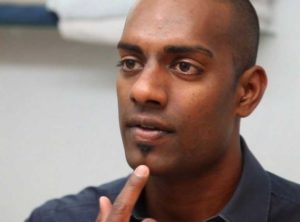 That eye in the hurricane, that moment of grace, is the place we find ourselves in when we say, No, not tonight, I don’t need it. And then…an almost shocking sense of calm, strength, accomplishment, at the core of our being. We didn’t know it would be there until we relented, until we let the desire spin off into space and didn’t pursue it. That’s when we found ourselves to be whole, and there’s no better feeling than that.
That eye in the hurricane, that moment of grace, is the place we find ourselves in when we say, No, not tonight, I don’t need it. And then…an almost shocking sense of calm, strength, accomplishment, at the core of our being. We didn’t know it would be there until we relented, until we let the desire spin off into space and didn’t pursue it. That’s when we found ourselves to be whole, and there’s no better feeling than that.
I think Julian’s final retort was: “Why should I? Why should I give up something I don’t have to give up?”
I could see that all his sparkling 12-year old intelligence was bound up in that question. And all I could say was: “Because you can, and you know you can.”
(He also got a free back rub out of the deal.)
The expression on his face when I left the room was a soft glow of serenity. 
 Now about that chapter. I’ve had papers rejected by publications lots of times. It’s part of the rat race of being an academic, a researcher, submitting your best work to journals, waiting for the letter from the editor, finally getting that heart-stopping email and reading it and Oh Shit! They’re rejecting it?! Without even a “revise and resubmit!” Damn ignorant asshole editors. Too good for your shitty journal anyway… Then the anger and disappointment start to evaporate and you start thinking about what journal to send it to next. That’s the life of an academic. And that’s one reason I was glad to be done with it, and why, about eight months ago, I swore to myself I was done with academic writing.
Now about that chapter. I’ve had papers rejected by publications lots of times. It’s part of the rat race of being an academic, a researcher, submitting your best work to journals, waiting for the letter from the editor, finally getting that heart-stopping email and reading it and Oh Shit! They’re rejecting it?! Without even a “revise and resubmit!” Damn ignorant asshole editors. Too good for your shitty journal anyway… Then the anger and disappointment start to evaporate and you start thinking about what journal to send it to next. That’s the life of an academic. And that’s one reason I was glad to be done with it, and why, about eight months ago, I swore to myself I was done with academic writing. So I wrote the chapter. Took pieces from other work, revised them, wrote some new stuff, trying to make it accessible for all those doctors out there, because they don’t really understand human development very well and they sure don’t understand psychology very well. So, why not give them the benefit of my stratospheric perspective. (LOL) I spent a couple of weeks working pretty hard, sent it in, and soon heard back from the editor. Thank you for submitting your chapter for publication in “A prescriber’s guide to methadone and buprenorphine for opioid use disorder…” Which is when I said to myself, those ignorant editors! They got the wrong book. Or the wrong title. Or something. I can’t write a chapter that urges ditching the medical model for a damn prescriber’s guide!
So I wrote the chapter. Took pieces from other work, revised them, wrote some new stuff, trying to make it accessible for all those doctors out there, because they don’t really understand human development very well and they sure don’t understand psychology very well. So, why not give them the benefit of my stratospheric perspective. (LOL) I spent a couple of weeks working pretty hard, sent it in, and soon heard back from the editor. Thank you for submitting your chapter for publication in “A prescriber’s guide to methadone and buprenorphine for opioid use disorder…” Which is when I said to myself, those ignorant editors! They got the wrong book. Or the wrong title. Or something. I can’t write a chapter that urges ditching the medical model for a damn prescriber’s guide! me after I withdrew my submission and said: Addiction doctors prescribe opioid substitutes to 95% of their opioid-addicted patients. Like: duh…didn’t I know that? Yes, I knew that, more or less. And I knew that
me after I withdrew my submission and said: Addiction doctors prescribe opioid substitutes to 95% of their opioid-addicted patients. Like: duh…didn’t I know that? Yes, I knew that, more or less. And I knew that  opioid addicts are often in desperate need of opioid substitution therapy (OST). It helps them get off the street and sometimes stay off, it relieves the overwhelming anxiety of withdrawal, and it saves lives. As
opioid addicts are often in desperate need of opioid substitution therapy (OST). It helps them get off the street and sometimes stay off, it relieves the overwhelming anxiety of withdrawal, and it saves lives. As  all that. I fully advocate the use of methadone and Suboxone. I agree with other progressive addiction specialists (e.g.,
all that. I fully advocate the use of methadone and Suboxone. I agree with other progressive addiction specialists (e.g., 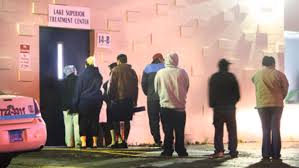 I told myself I’m trying go avoid an awkward irony: that there’s maybe one good reason to call addiction a disease. In the US and Canada it’s the only way to get addicts their medicine, their heroin substitutes. I’ve thought about this
I told myself I’m trying go avoid an awkward irony: that there’s maybe one good reason to call addiction a disease. In the US and Canada it’s the only way to get addicts their medicine, their heroin substitutes. I’ve thought about this 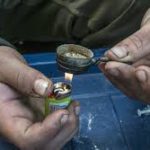 lots. But I remain concerned and confused. Maybe “medicalization” is the best we can do for people who are in a real jam, on the street or close to it, hunting for heroin day by day. Yet it maintains, in fact it strengthens, the premise that these people are sick, and it sidelines all the familial, social, economic, and cultural forces that pushed them into that lifestyle in the first place.
lots. But I remain concerned and confused. Maybe “medicalization” is the best we can do for people who are in a real jam, on the street or close to it, hunting for heroin day by day. Yet it maintains, in fact it strengthens, the premise that these people are sick, and it sidelines all the familial, social, economic, and cultural forces that pushed them into that lifestyle in the first place.



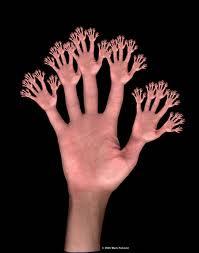
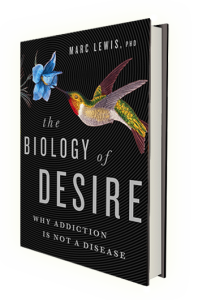 Informed by unparalleled neuroscientific insight and written with his usual flare, Marc Lewis’s The Biology of Desire effectively refutes the medical view of addiction as a brain disease. A bracing and informative corrective to the muddle that now characterizes public and professional discourse on this topic.” —Gabor Maté, M.D., author of In The Realm of Hungry Ghosts: Close Encounters With Addiction
Informed by unparalleled neuroscientific insight and written with his usual flare, Marc Lewis’s The Biology of Desire effectively refutes the medical view of addiction as a brain disease. A bracing and informative corrective to the muddle that now characterizes public and professional discourse on this topic.” —Gabor Maté, M.D., author of In The Realm of Hungry Ghosts: Close Encounters With Addiction
Recent Comments